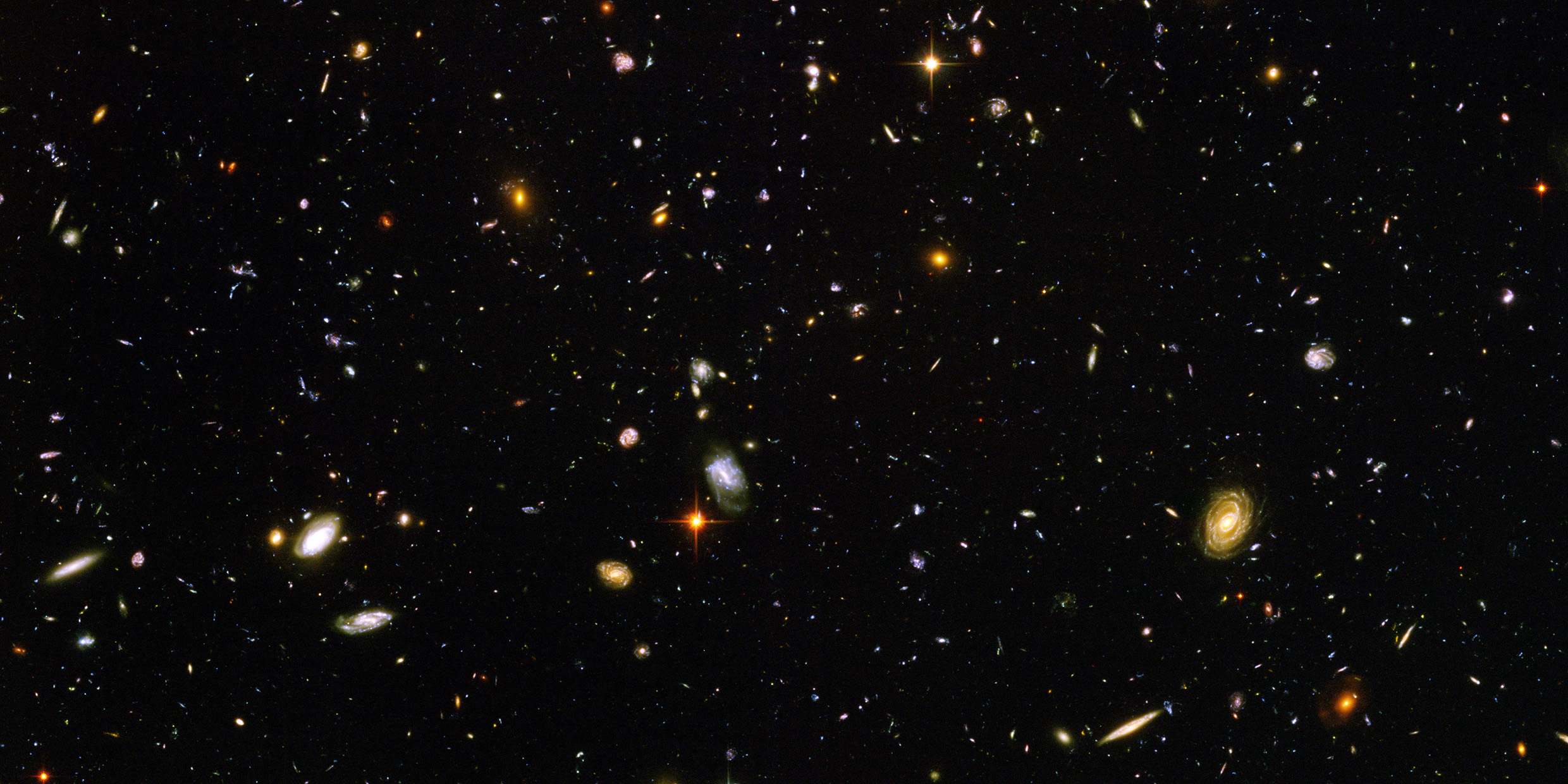Originally published 7 September 2008
Let me return once again to the Hubble Ultra-Deep Field Photo, a document of simply mind-blowing significance.
The photo was made by the Hubble Space Telescope during 400 orbits of the Earth, a total exposure of 11.3 days. It shows a tiny spot of the southern sky in the constellation Fornax, a speck of the dark night you could cover up with the intersection of crossed sewing pins held at arm’s length. There appears to be five or six foreground stars in the photo (the dots with spikes), stars in our own Milky Way Galaxy. Then, beyond, at ever increasing distances, reaching back almost to the beginning of time — galaxies. Spirals, ellipticals, sphericals. Ten thousand galaxies in all. And these are presumably only the brightest, the galaxies with upwards of 100 billion stars or more.
We would see more or less the same thing looking out from Earth in any direction. It would require 20,000 photos like this to cover the bowl of the Big Dipper, 13 million to blanket the entire sky. A whole-sky survey at the same resolution would reveal 130 billion galaxies.
In The Soul of the Night I describe making a galaxy for my students by pouring a one-pound box of salt in a spiral on the classroom floor, each grain of salt representing a star. It’s a dramatic demonstration, but not a patch on reality. The salt grains are actually way too big to be stars on the scale of the classroom floor. To have as many stars as there are in the Milky Way Galaxy would require ten-thousand boxes of salt!
At the scale of the Hubble Ultra-Deep Field Photo we can see as many galaxies as there are grains in ten-thousand boxes of salt. And each of those galaxies contains as many stars as there are grains in ten-thousand boxes of salt. And that’s just the universe we can see.
I’ve spent a lifetime trying to get my head around the scale of the universe, and the apparent utter randomness of our place in it. Just a few hundred years ago humans imagined themselves to live at the center of a cozy cosmic egg, embraced by a sphere of stars just up there. Psychologically, we still linger in that anthropocentric cosmos.
If the Hubble Ultra-Deep Field Photo whispers anything in our ear, it is that the neolithic myths so many of us live by are hopelessly out-of-date. We need new, more capacious stories commensurate with the stunning achievements of human knowing. We need theologies that consist of more than projections of human qualities onto a mystery that burns like a hidden flame in the “ten thousand times ten thousand boxes of salt.” When I tried to convey some sense of cosmic scale, my students sometimes said to me, “It makes me feel so insignificant.” My reply: You are part of a species who flung a magnificent instrument into space and managed to keep it pointed at a tiny dot of sky for 11.3 days as the instrument whirled around the Earth. You made visible 130 billion galaxies. You carry a universe of 130 billion galaxies in your head. If that doesn’t make you feel significant, nothing will.
The Hubble Ultra-Deep Field Photo is an extraordinary step in human knowing. And, ironically, it confirms our ultimate ignorance. We are blown and stirred and battered by a wind of galaxies that rushes outwards from a deeply mysterious beginning, We are the stuff of it. Every atom in our body vibrates with the tempo of it. We let go of our ancient moorings and swim in the sea of it.
And more. Saying yes to the universe of the galaxies makes it easier to say yes to the universe here and now. To say with Walt Whitman: “…the pismire is equally perfect, and a grain of sand, and the egg of the wren…”
Yes. Yes. Yes.



